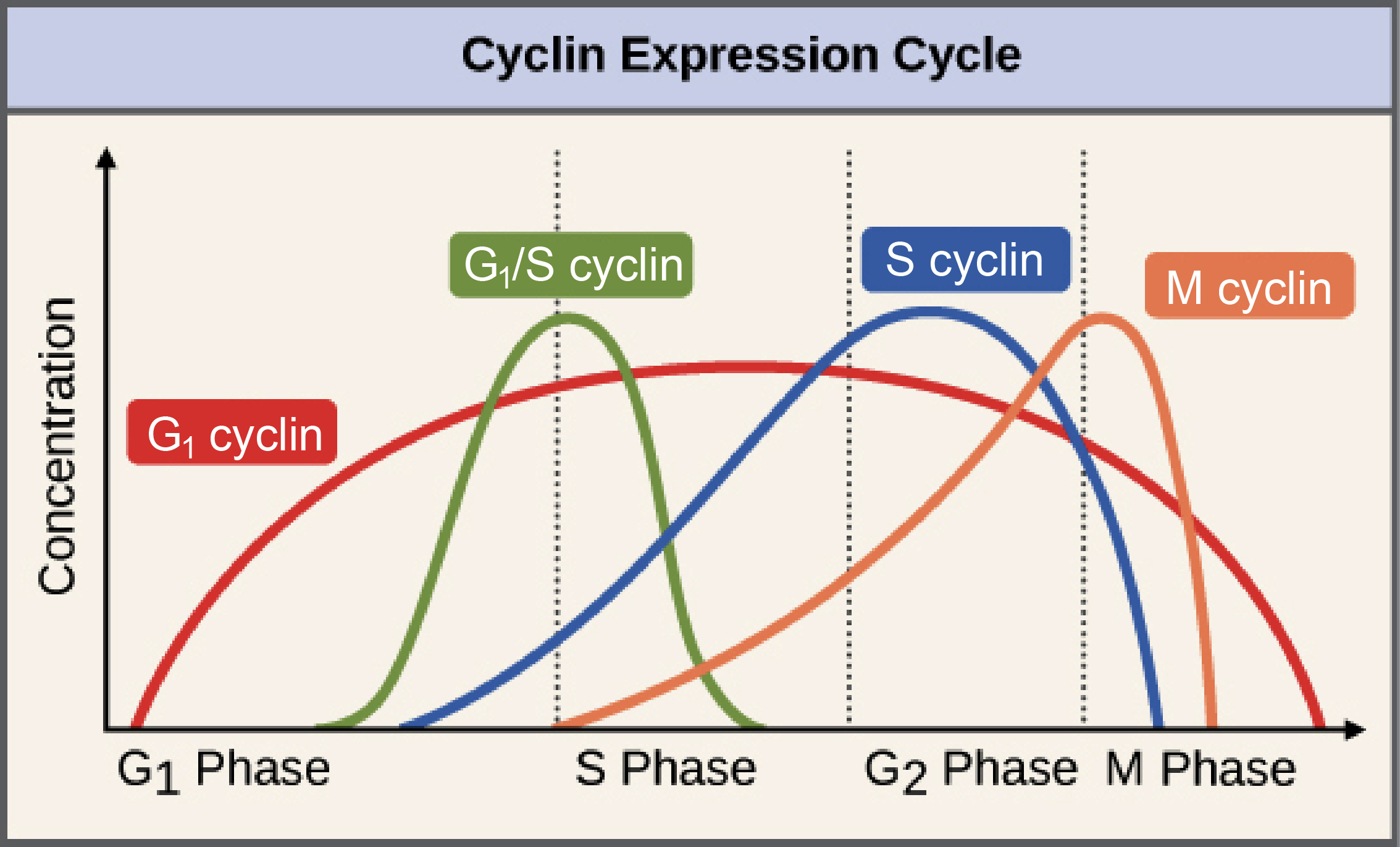Cell Cycle Regulation
In the article on cell cycle checkpoints, we looked at the why of cell cycle transitions: the factors that a cell considers when deciding whether or not to move forward through the cell cycle. These include both external cues (like molecular signals) and internal cues (like DNA damage).
Cues like these act by changing the activity of core cell cycle regulators inside the cell. These core cell cycle regulators can cause key events, such as DNA replication or chromosome separation, to take place. They also make sure that cell cycle events they take place in the right order and that one phase (such as G) triggers the onset of the next phase (such as S).
In this article, we'll look at a few of the most important core cell cycle regulators: proteins called cyclins, enzymes called Cdks, and an enzyme complex called the APC/C.
Cyclins
Cyclins are among the most important core cell cycle regulators. Cyclins are a group of related proteins, and there are four basic types found in humans and most other eukaryotes: G cyclins, G/S cyclins, S cyclins, and M cyclins.
As the names suggest, each cyclin is associated with a particular phase, transition, or set of phases in the cell cycle and helps drive the events of that phase or period. For instance, M cyclin promotes the events of M phase, such as nuclear envelope breakdown and chromosome condensation.
The levels of the different cyclins vary considerably across the cell cycle, as shown in the diagram at right. A typical cyclin is present at low levels for most of the cycle, but increases strongly at the stage where it's needed. M cyclin, for example, peaks dramatically at the transition from G to M phase. G cyclins are unusual in that they are needed for much of the cell cycle.

Comments
Post a Comment